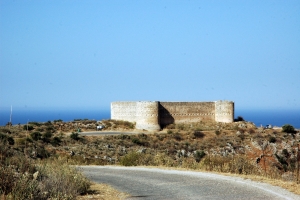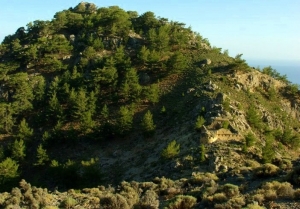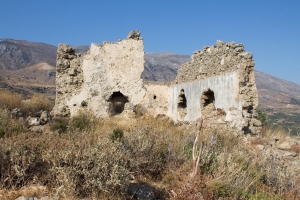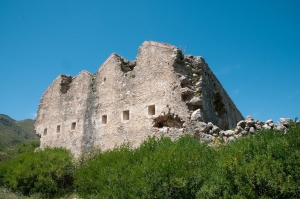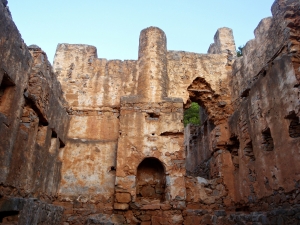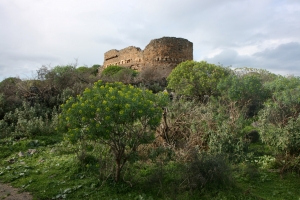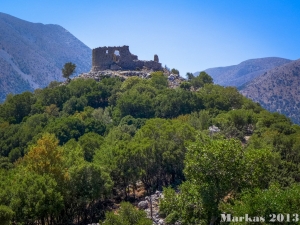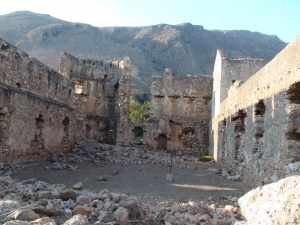The fort of Koules is located in Paleokastro area, 12km east of Chania, near the village of Kalami and close to the ruins of ancient Aptera. The fort was built by the Turks after the Cretan Revolution of 1866, in the framework of a program to control Crete from a network of towers.
This is one of the several Turkish towers (koules) that the Turks built in the late 19th century in order to control the south shores of Crete. This is ruined and has amazing views to the surrounding areas.
One of the many Turkish towers (Koules) built by the Turks in Crete is that of Plakias at South Rethymno. It was built on a hill of conglomerate grounds, with steep cliffs at its east and south sides, inside a fortified enclosure.
The most important passage of Rethymnon prefecture was that of Agios Vasilios (south), through where Turks and Greeks traveled from Mesara plain to Sfakia area. Thus, several towers (kouledes) were built. Such one Koules was built near the entrance of the gorge Kourtaliotis, near the village Koxare. The tower was partially destroyed by the Cretan rebels in 1896.
On the west side of the exit of Samaria Gorge, above the current village of Agia Roumeli, the Turks built the Koules of Agia Roumeli to suppress the rebels hiding in the gorge. This Koules is in quite good condition. There were three more towers in wider area of Agia Roumeli (in Skoteini, Aggelokambos and Sideris positions)
The Koules in Nio Chorio is located in the middle of Apokoronas Province, about 25km southeast of Chania and close to the village of Nio Chorio. On the hill of the fort leads a road starting from Nio Chorio. The fort is not well preserved, with only a few walls standing and commemorating its glorious past.
Askyfou Plateau, about 50km south of Chania city, is located in a strategic position and is formed on the passage that connects the southern shores of Sfakia to the north coasts of Crete. Sfakia did always breed great revolutionaries and the Turks always wanted to control them. Thus, in response to the Cretan Revolution of 1866, they began construct Koules, i.e. small castles, in the most important locations of Sfakia.
Above Loutro there are still the ruins of the Turkish fortress, Koules, which dominated over the current settlement. The building was built in 1868 and had two towers on west and east sides. It has rectangular shape and some of its walls survive. Outside the walls, there are big tanks surviving.











